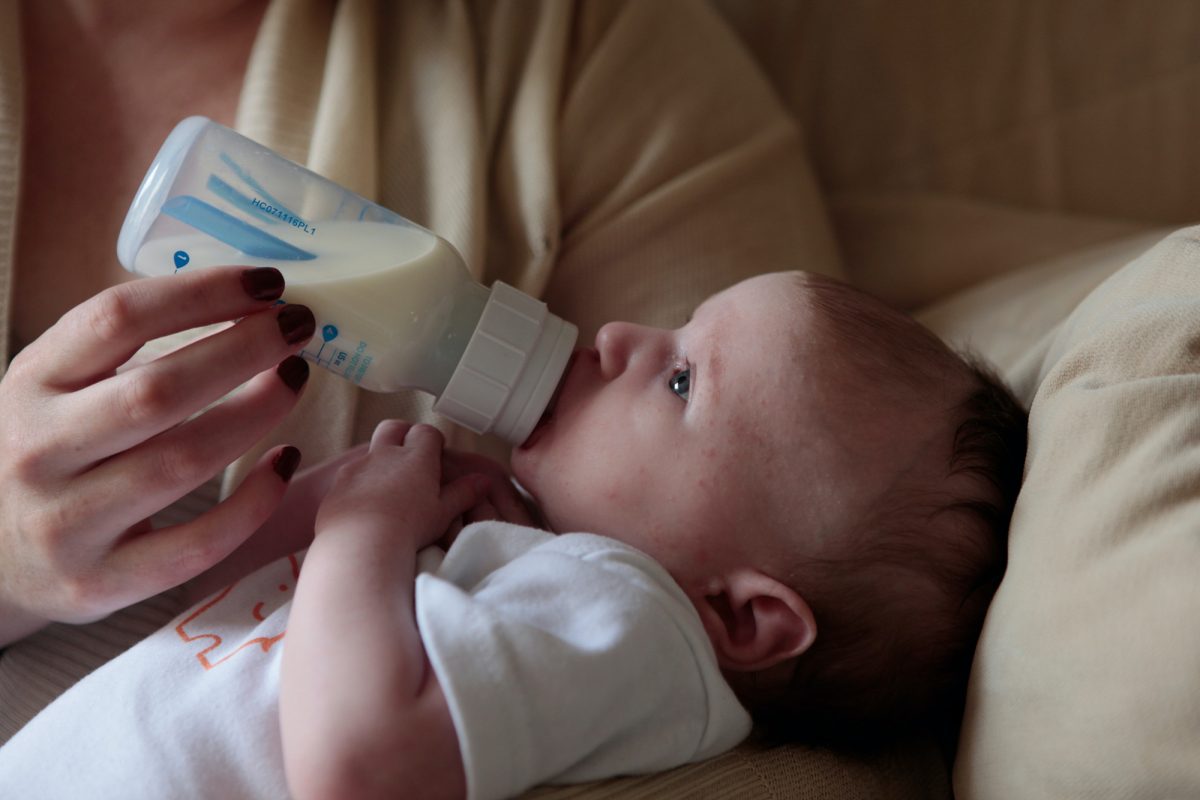
Study Suggests SARS-CoV-2 Antibodies in Breast Milk Are Robust, Neutralizing and Durable
Dr. Liji Thomas, MD via News-Medical – The pandemic of coronavirus disease 2019 (COVID-19) has caused over 123.7 million cases and has claimed more than 2.7 million lives worldwide. However, the infection, caused by the severe acute respiratory syndrome coronavirus 2 (SARS-CoV-2), affects children and adolescents with strikingly less severity than adults. Infants are also included in this low-risk group.
However, a new preprint on the bioRxiv* server addresses the issue of passive immunity for newborns via breast milk.
Importance of the Study
Among infants with COVID-19, one in ten require intensive care for severe illness. A significant minority also shows signs of Multisystem Inflammatory Syndrome in Children(MIS-C) associated with COVID-19, setting in after weeks or months. The possibility of transmitting infection also exists with infants, adding reason to protect this group against infection.
Breast Milk Antibodies
Breast milk contains about 0.6 mg/mL of antibodies in the form of immunoglobulin (IG). About 90% of this is IgA, mostly secretory (sIgA). This comprises a complex of IgA antibodies, the J-chain and secretory component (SC) proteins, forming antibody polymers.
The entero-mammary link is in action to produce sIgA from the gut-associated lymphoid tissue (GALT) and from B cells recruited from other mucosal surfaces, as well as from the draining lymphatics of the breast tissue. This form of IgA is very stable and does not easily break down under enzymatic action, whether in the milk or the infant’s gut or in the mucosae of the gut, the upper airway and the lungs.
The concentration of IgA in the infant’s stomach drops by half within two hours, while that of IgG drops by three-quarters. Preterm infants fail to show a decrease in IgA concentration within the first three months after birth, which is important given their increased susceptibility to infection.
Earlier Research
An earlier study by the same authors showed that all milk samples from 15 recently recovered COVID-19 mothers contained significant IgA binding activity against the viral spike protein. About 80% of samples were also observed to contain antibodies specific to the receptor-binding domain (RBD), including secretory antibodies.
Only a few showed anti-RBD IgG or IgM activity, indicating that the anti-RBD IgA was secretory in nature.
What Were the Results?
The current study showed the types of anti-spike antibodies in breast milk from a larger group of donors, collected at 4-6 weeks after infection.
The antibody profile in milk was studied using IgA ELISA against the recombinant trimeric spike protein of the virus. The researchers found that 88% of samples were positive for anti-spike IgA and that binding was higher for spike-specific binding compared to controls.
Titration of 40 positive samples showed positive IgA endpoint titers in 95% of them (indicating the highest dilution at which the reaction is positive). Of these, half showed a titer five-fold or more the endpoint titer of the positive cutoff value, entitling them to be called high-titer samples.
Again, 19 of 20 samples that were assayed for spike-specific sIgA and IgG were positive for spike-targeting secretory antibodies. One lacked specific IgA but showed specific secretory antibodies, with another showing the opposite profile.
Of these samples positive for spike-specific secretory antibodies, 18 had positive endpoint titers. Meanwhile, among the high-titer spike-specific IgA-containing samples, seven contained high titers of specific secretory antibodies.
The levels of IgA and secretory antibodies were positively correlated. Again, 15/20 samples contained spike-directed IgG, and 13 had positive endpoint titers. Only two were high-titer samples. IgA and IgG titers were not correlated, neither were IgG and SC titers.
Persistent IgA Response
The researchers also observed persistently high spike-targeting IgA titers in 28 paired convalescent samples collected at 4-6 weeks and 4-10 months after infection. The average endpoint titers showed no significant change over this period
In half of the samples, the IgA titer was reduced by more than a tenth, of which only two showed over 50% reduction. In 43% it went up by more than a tenth. The longest follow-up was up to 10 months after infection in 14 patients.
Here too, the titers were unchanged on the whole, with five donors showing more than 10% drop, eight more than 10% increase, and one with no change. One showed more than a 50% reduction in titer.
Neutralizing Activity
Neutralizing activity was demonstrated by 75% of samples at the highest concentration, vs. only 13% of controls. The mean percent neutralization values at 50ug/ml were much higher for the convalescent samples relative to the controls.
Convalescent samples achieved effective inhibition of 50% of viral particles (50% inhibitory concentration, IC50) in 6/8 samples, but only 1/8 pre-pandemic controls. The mean IC50 among the six convalescent specimens was 33.6ug/mL of total IgA.
The neutralizing capacity was correlated significantly with the IgA binding. The two samples that failed to show neutralizing activity also had the lowest IgA endpoint titers.
What Are the Implications?
The lack of evidence that SARS-CoV-2 is transmitted via human milk has led to recommendations to continue breastfeeding if desired following the delivery of a COIVD-19 positive mother, along with the use of masks, hand and breast hygiene.
The current study confirms that breast milk is not just harmless but positively efficacious in providing passive immunity to the infant of a convalescent mother. Not only is the presence of sIgA in milk very common after infection, but is dominant relative to IgG.
Moreover, the correlation between anti-spike IgA and secretory antibodies is strong, which shows that the greatest part of breast milk spike-targeting IgA is sIgA, thus effectively protecting the infant. Secretory antibodies are capable of withstanding harsh biological environments such as the gut and the mouth of infants.
Extracted milk IgA is also a potential therapeutic avenue for COVID-19, since it will probably survive administration to the airways and will be highly effective at lower doses than those required with the current convalescent plasma or plasma Ig protocols that are administered systemically.
While all high-titer IgA-positive samples showed neutralizing activity against the spike, two out of three positive but not high-titer samples failed to do so. These were all from 4-6 week samples, and neutralizing activity may have been detectable as the immune response matured.
The durability of the response points towards protection of the infant while on breast milk, and also a potential donor pool to generate extracted milk IgA for therapeutic use. The fact that 8/14 samples at 7-10 months showed a rise rather than a fall in specific IgA titers indicates the possibility of long-lived plasma cells in the GALT and breast tissue. These may be restimulated by other coronaviruses or the same virus on repeated exposure.
*Important Notice
medRxiv publishes preliminary scientific reports that are not peer-reviewed and, therefore, should not be regarded as conclusive, guide clinical practice/health-related behavior, or treated as established information.
To read the original article click here.






